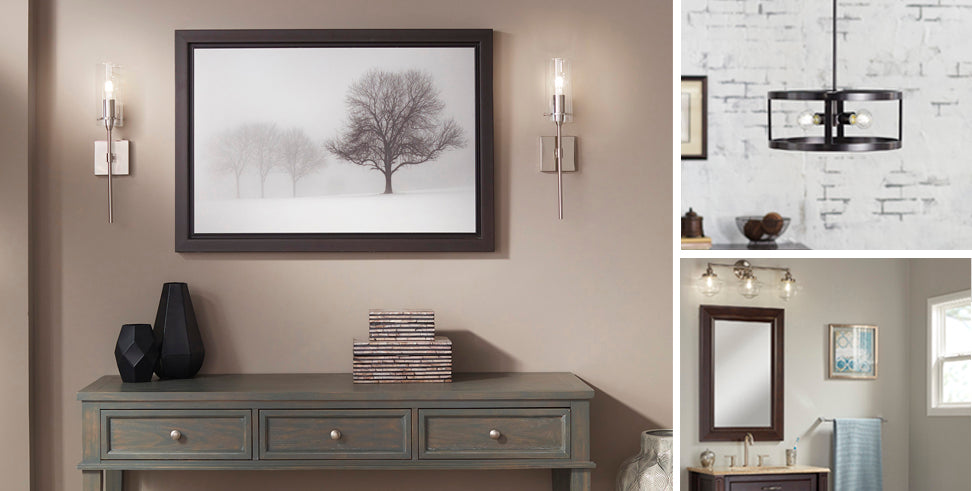
Understanding Lumens
Understanding Lumens
When shopping for lightbulbs, compare lumens to ensure the amount of light, or level of desired brightness.
BUY LUMENS, NOT WATTS
Lumens equal brightness; watts do not, (watts measure energy used.) In the past, light bulbs were purchased based on how much energy, or watts, they used.
When shopping for lightbulbs, choose the lightbulb for the brightness by comparing lumens instead of watts. A lumen is a measure of the amount of brightness of a lightbulb -- the higher the number of lumens, the brighter the lightbulb.
WHAT'S A LUMEN?
Lumens are to light what
- • Pounds are to bananas
- • Gallons are to milk
Lumens measure how much light is emitted from a bulb. More lumens means it's a brighter light; fewer lumens means it's a dimmer light.
Lumens allow consumers to buy the desired amount of light, so when buying new bulbs, or fixtures with bulbs, think lumens, not watts.
The brightness, or lumen levels, of the lights in a home may vary widely, so here's a rule of thumb:
- • To replace a 100 watt (W) incandescent bulb, look for a bulb that gives about 1600 lumens. For something dimmer, go for less lumens; for a brighter light, look for more lumens.
- • Replace a 75W bulb with an energy-saving bulb that gives about 1100 lumens
- • Replace a 60W bulb with an energy-saving bulb that gives about 800 lumens
- • Replace a 40W bulb with an energy-saving bulb that gives about 450 lumens.
Color Temperature
Light appearance is measured by correlated color temperature (CCT) on the Kelvin (K) scale, from warm to cool.
The warmer light colors associated with incandescents are on the lower end of the scale. So, if that's preferred, look for LEDs and CFLs with light color temperatures in the 2700K to 3000K range. Pure white light hovers around 4000K, while cooler temperatures that simulate daylight are 5000K or higher.
Check the CRI
CRI is the measurement of how true the color of an object looks under the bulb's light. A standard CRI for most indoor residential applications is 80 or above. For a brighter appearance look for a bulb with a CRI of 90 or above, which is an excellent choice for bathroom vanity lights. All halogen/incandescent light bulbs have a CRI at or near 100.
For more information on lumens and lighting visit energy.,gov
Source: energy.gov
